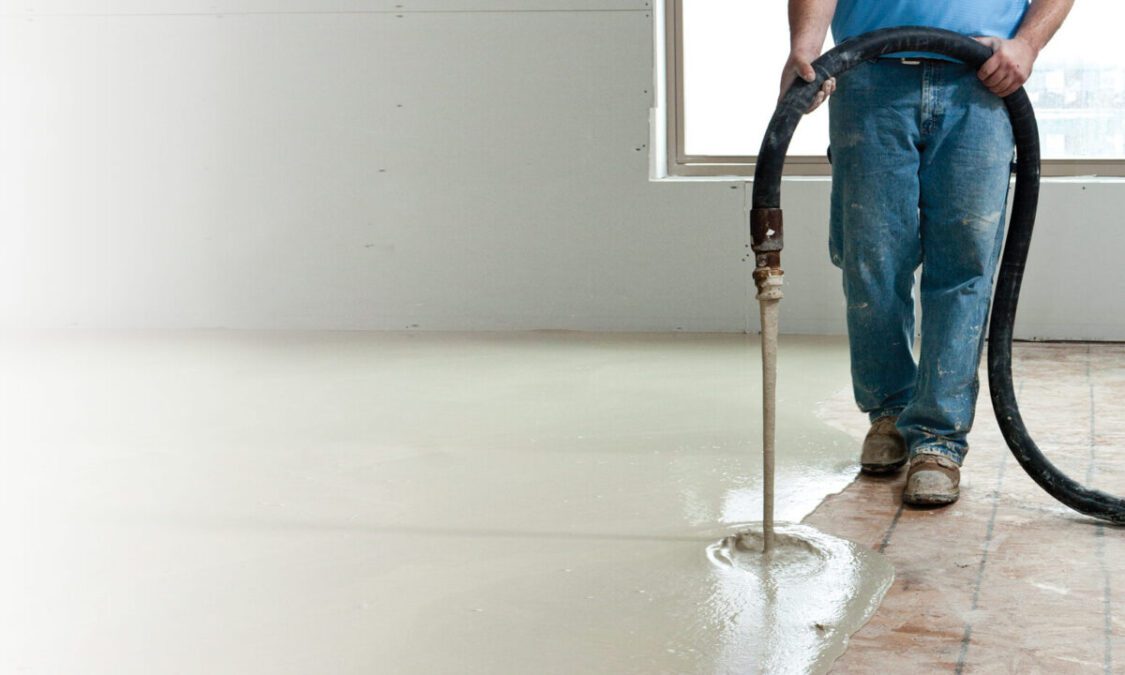FAQs About Gypcrete Underlayment

Gypsum concrete produces a level surface that can support various floor types, including tile and wood. Licensed applicators install this product in multi-story buildings, commercial spaces, and locations with radiant heating systems. Here are some FAQs about gypcrete underlayment:
What Are the Benefits of Using Gypsum Concrete?
In apartments or multi-level homes, gypcrete underlayment is useful for reducing sound transmission between floors, creating quieter spaces. This product is lightweight, which means professionals can apply it in multi-story buildings without adding significant weight to the structure. Whether your floors have minor or serious imperfections, gypsum concrete can be poured to create a flat and smooth surface. Qualified applicators use this product with radiant heating systems to help transfer and distribute heat throughout the space, improving the system’s performance. This underlayment is also crack-resistant for increased durability.
How Do I Prepare a Surface for Gypsum Concrete Installation?
Before placing gypsum-based concrete, specialists clean the surface to remove any dust, dirt, grease, or oil that may prevent proper bonding. The subfloor should be completely dry to allow the product to set and stick properly. Conducting a moisture test can reveal whether the subfloor is dry enough to begin the installation process. Installers inspect the subfloor for cracks, gaps, or holes and determine if they need to be repaired beforehand. In many cases, gypcrete can be used to repair cracked and uneven subflooring. The installation technician may also add a bonding primer to help the gypsum-based underlayment adhere better to the existing subfloor.
How Do Professionals Apply This Product?
Using a specialized pump or mixing equipment, the installation technicians combine gypsum powder with water and other additives to create a smooth, fluid mixture. They mix the items carefully to attain a consistent mixture that flows properly during application. The professionals then pour the mixture on the floor, allowing it to settle on its own. After pouring, the gypsum concrete is leveled to create a uniform thickness across the entire floor. Some gypcrete products are self-leveling, making them easier and more convenient to install. Once the installation process is complete, the applicators inspect the results for any imperfections, cracks, or uneven areas and smooth them out.
How Long Does the Underlayment Take to Dry?
Gypsum concrete takes several days to dry, depending on how thick it is and the environmental conditions. If the pour is thick, such as those used for leveling extremely uneven surfaces or creating soundproofing layers, it may require more time to cure. Thin layers tend to dry in less time because they have less moisture content to evaporate. Warmer temperatures speed up the drying process, while cooler conditions can slow it down. You may open windows or use fans to boost air circulation in your space and help the concrete cure properly.
Get Quality Gypcrete Underlayment Installation
Whether you plan to install tile, hardwood, or carpet flooring, gypcrete underlayment can provide a smooth and even subfloor. This product provides many benefits, from soundproofing to fire resistance. Contact a trusted provider today to learn more about their gypsum-based underlayment products and installation requirements.




